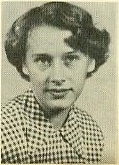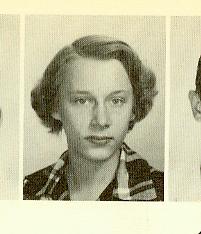
I have been tracking the historic Union Pacific Big Boy #4014 steam locomotive since it returned to the rails in May after being a static museum piece at the RailGiants Museum in Pomona, California, for 53 years.
I visited Ogden and Promontory Point, Utah, for the 150th anniversary celebration of the completion of the first transcontinental railroad. More on that trip in my blog post here: Historic trains in Ogden, Utah.
After Big Boy finished in Utah, it returned home to Cheyenne, Wyoming, where it is housed at the Union Pacific steam shops. There it stayed for a few weeks before it embarked on a 2019 tour of Union Pacific territory but only on tracks owned by Union Pacific or tracks over which it has trackage rights. First it went to the mid-west, including Chicago. Then home to Cheyenne for a break.
On September 27, it headed to California, arriving on October 11. That’s when I sprang into action, hopping in my car and chasing it throughout Southern California—Bloomington, Victorville, Barstow, Yermo, Colton, Beaumont, Indio, and Niland.
I only have 31,415,926 pictures and videos which will take the rest of my life to process, but following are some of my better ones so far.
The picture and video below is of Big Boy 4014 going north through Cajon Pass on October 12, heading to Victorville from Bloomington. Big Boy 4014 was built in November 1941, and this is only the second time it has been through Cajon Pass under its own power, and the first time going north, which means it was climbing a 2.2% grade, quite steep for trains. Cajon Pass handles about 150 trains each and every day, going north and south, for both Union Pacific and BNSF.

Once it climbed out of Cajon Pass, it made a pit stop in Victorville before heading to Barstow. It took me quite a while to get out of the Cajon Pass because of the crowds….
….so I did not stop in Victorville. Just drove by the station to have a look-see. I headed to Barstow, a historic station with a historic Harvey House depot still standing….

….so I knew there would be crowds there. Indeed there were.

Interestingly, Big Boy spent 2½ hours just south of the Barstow railyard turning around so it could back into the Amtrak station. That didn’t make any sense to me, or any of the other people crowded at the north end of the station because Big Boy would leave and continue going twelve miles north to Yermo, where it would spend the night.
Once the crowd realized that it was backing into the station, thousands of people started running from the north end of the station to the south. I mean, who wants pictures and videos of the rear of the train? It’s Big Boy leading the way that we all wanted. Fortunately, I had been train-watching in Barstow in July 2018. I wanted a picture of Big Boy under the long bridge over the rail yard, and I knew where I had to be in order to get that picture. Thus, I was already at the south end when people started rushing towards me! Unfortunately, the Big Boy consist of over 25 cars was too long for the station, so I didn’t quite get the picture I wanted, but the following three come close.
In the first picture, Big Boy has backed into the station and is at a stop, unloading about 500 passengers way back there who had paid $5,000 (coach) or $10,000 (dome) for a 3-hour ride from Bloomington to Barstow. A little out of my price range…. A BNSF freight train is passing on the track to the right.

In this next picture, Big Boy is moving out of the station. This might be my favorite picture from Barstow—train, people, bridge, people on the bridge, and good smoke!

This last picture most closely captures the type of picture that I was trying to get.

As one who was chasing Big Boy from here to there, I was caught completely off guard when, just a few minutes after leaving the Barstow Amtrak station, it comes back through the rail yard. Backwards! Not only that, but it traveled backwards for the twelve miles from Barstow to Yermo. I got to Yermo just before it did and got a video of it going backwards. This is my first video of a train going backwards.
Big Boy’s overnight stay in Yermo was at the Union Pacific railyard there. It is a private, secured facility, active with lots of trains, and dangerous. There were hundreds of us who could not comprehend the NO TRESPASSING and PRIVATE PROPERTY signs.

Neither the Union Pacific Police nor the County Sheriffs made any attempt to stop us, keep us out, direct us out, escort us out, or arrest us, so I guess all is well that ends well, as my wise old grandmother would say.
In the early days of railroads, competing companies would build rails that crossed each other, creating bottlenecks and, sometimes, accidents. One of the last bottlenecks for railroad traffic was in Colton, California, where BNSF, Metrolink, and Amtrak ‘Southwest Chief’ used the north/south tracks, and Union Pacific and Amtrak ‘Sunset Limited’ used the east/west tracks. There were up to 110 trains daily, all at a ground level on criss-crossing tracks. Union Pacific built the Colton Flyover to relieve congestion. Both directions are double-tracked, so it is possible to find up to four trains concurrently using the Colton Flyover crossing. It was opened in August 2013, so it’s still new and a pleasure to watch train action there.
Here’s my video of 6:35 of action at the Colton Flyover on 10/15/19. Union Pacific starts off the video with a westbound train on the upper tracks. It stops, waiting for Big Boy to come through eastbound. BNSF enters the scene with a northbound train at the 2:04 mark, a 5-engine, 118-car consist on the lower tracks. Big Boy #4014 enters at 5:28 on the upper tracks. Video ends with Big Boy giving a few blasts on its awesome horn.
I took videos with my hand-held Canon video camera. My Canon 760D was on a tripod and set to take time lapse photographs every 5 seconds. Here is one of the time lapse pictures of Big Boy on the Colton Flyover.

I knew crowds would be huge in the deserts in southeastern California, and the roads are one-lane with sandy shoulders, so parking would be a problem. However, I also knew where the most popular spots would be, and I knew some secret spots of my own. The following picture is from one of my secret spots south of Indio. Trains often idle here waiting for their green light, so I was 99.9% sure I could get a picture of old meeting new.
Old, meet new. New, old.

There are three people in the picture at center left, and there was one guy behind me. We had the place to ourselves!
As I said earlier, Big Boy was built in November 1941. Diesel engine #8625 is an SD70AC3 locomotive built in June 2008. Big Boy has 4 cylinders producing 6,290 horsepower while #8625 has 16 cylinders producing 4,290 horsepower. I got asked on Facebook how 4 cylinders could produce more horsepower than 16 cylinders. It’s done with cylinder size and pressure. Think about our cars. We have 8 cylinders producing anywhere from 160 horsepower to 708 horsepower, all done with the size of the cylinders (is the engine 160 cubic inches or 500 cubic inches?) and the pressure under which the cylinders are pushed.
The crowd in Beaumont was huge! I suspect it had something to do with Big Boy stopping at the shopping mall there. I felt sorry for the businesses because I think all their customers were out gawking at Big Boy.

Big Boy stopped in Niland, California, for a maintenance check before heading out into the Arizona deserts. Here are the worker ants serving their queen:



 My original review was published in my blog on October 16. You can read it here:
My original review was published in my blog on October 16. You can read it here: 








 We learned in Health 101 (men’s class) my first semester at Texas A&M University that men can get breast cancer, too. According to Wikipedia,
We learned in Health 101 (men’s class) my first semester at Texas A&M University that men can get breast cancer, too. According to Wikipedia,
 Today would have been my mother’s 88th birthday, according to her.
Today would have been my mother’s 88th birthday, according to her. However, at classmates.com, one can find yearbooks for just about any school in the United States for any year. Presuming that my mom was born in 1935, I went searching for yearbooks for Kingsville, Texas, for 1950-1953, and found one with Dawna’s picture in it (right).
However, at classmates.com, one can find yearbooks for just about any school in the United States for any year. Presuming that my mom was born in 1935, I went searching for yearbooks for Kingsville, Texas, for 1950-1953, and found one with Dawna’s picture in it (right). My maternal grandfather—we’ll call him Dr. Brinley since that’s his name—was number two. Dr. Brinley is retired from Brigham Young University where he taught marriage courses, conducted marriage seminars, was a marriage counselor, and authored many books on marriage. Do a Google Images search on Dr. Douglas E. Brinley…. Yep, that’s my maternal grandfather and all his books on heterosexual marriage and families. Many of his books still are for sale at amazon.com.
My maternal grandfather—we’ll call him Dr. Brinley since that’s his name—was number two. Dr. Brinley is retired from Brigham Young University where he taught marriage courses, conducted marriage seminars, was a marriage counselor, and authored many books on marriage. Do a Google Images search on Dr. Douglas E. Brinley…. Yep, that’s my maternal grandfather and all his books on heterosexual marriage and families. Many of his books still are for sale at amazon.com. My (supposed) dad (right) committed suicide on January 15, 1961. He was working for Missouri Pacific Railroad in Palestine, Texas. They found his body in a box car on January 18. Interestingly, January 15, is my second oldest brother’s birthday. So here’s how I am picturing this going down:
My (supposed) dad (right) committed suicide on January 15, 1961. He was working for Missouri Pacific Railroad in Palestine, Texas. They found his body in a box car on January 18. Interestingly, January 15, is my second oldest brother’s birthday. So here’s how I am picturing this going down:
